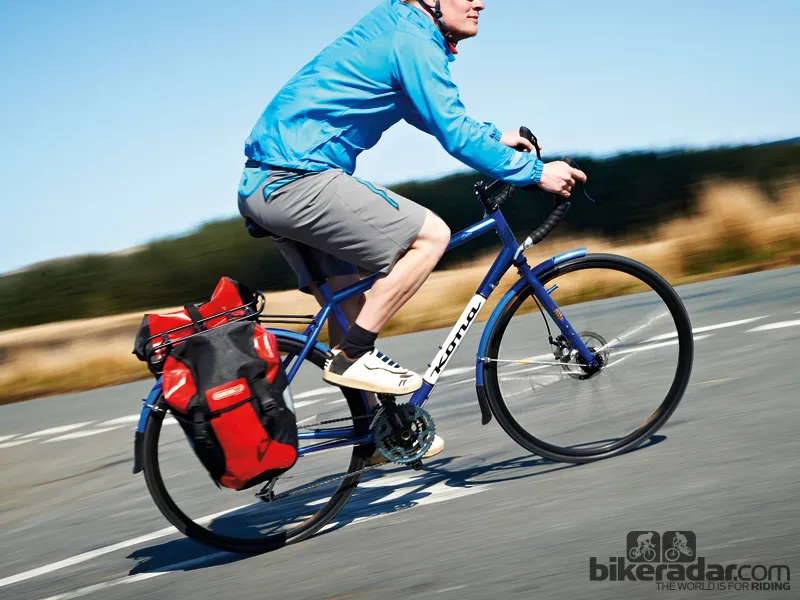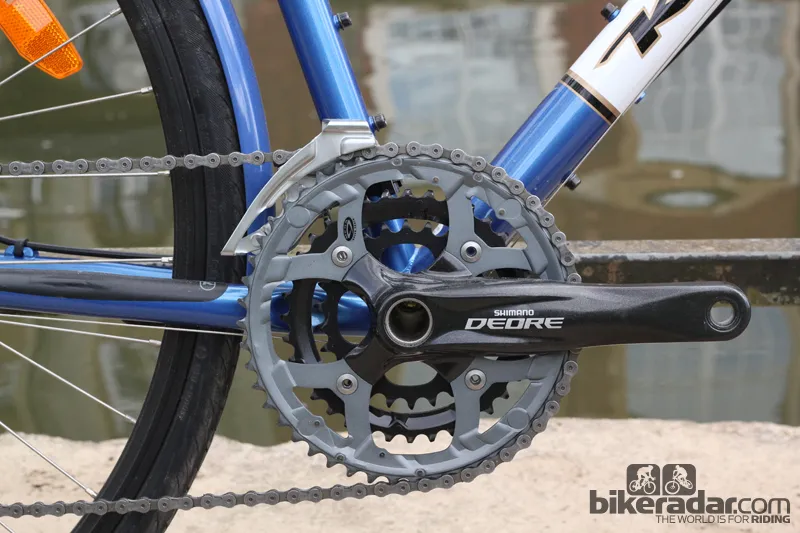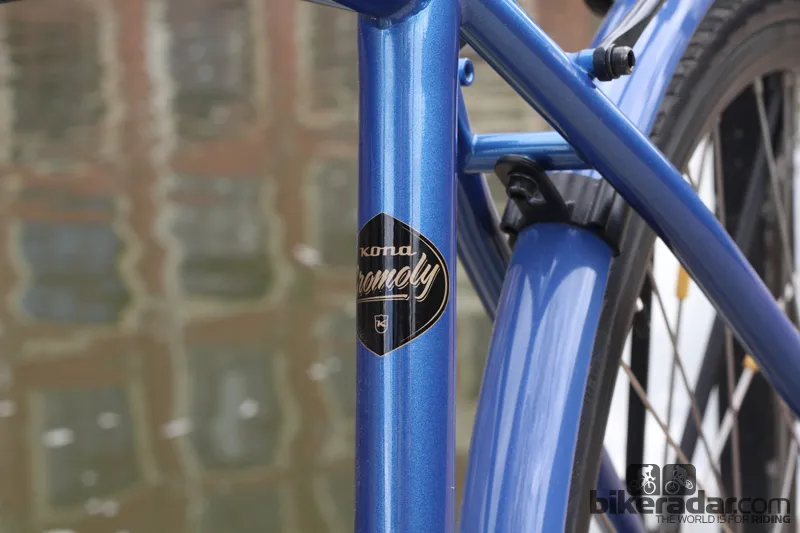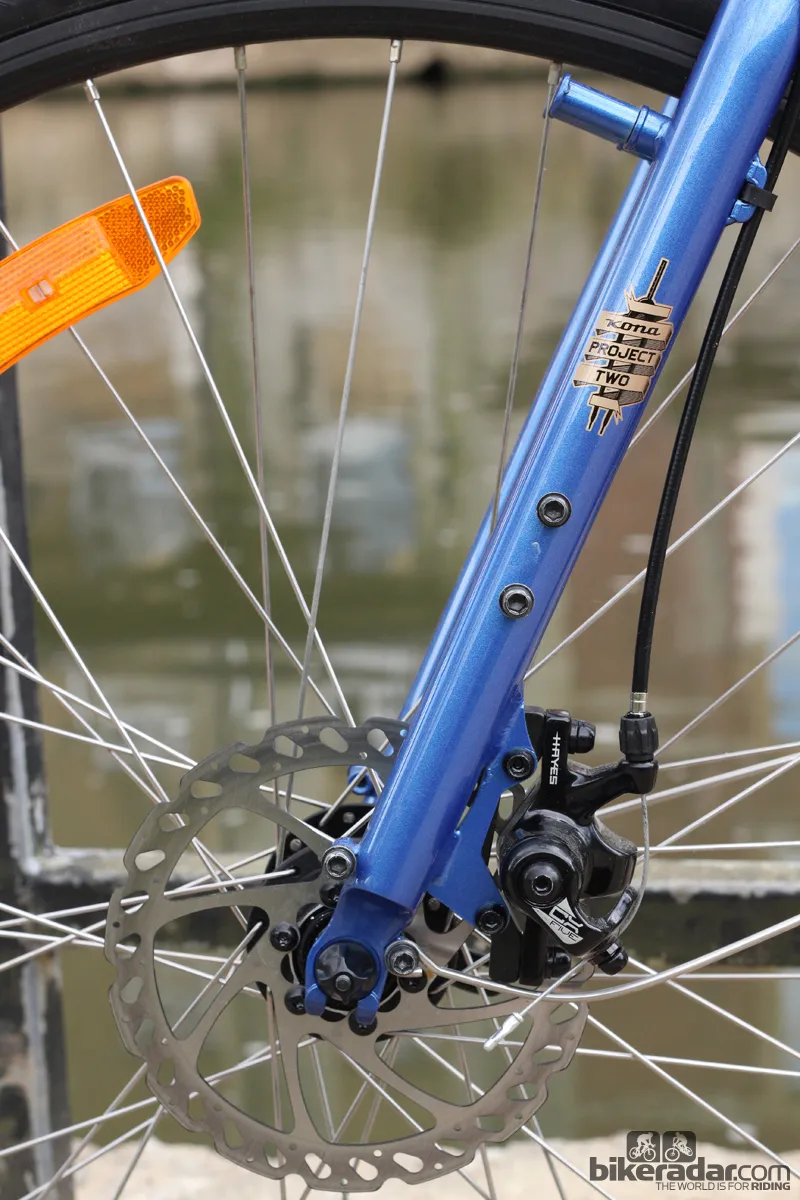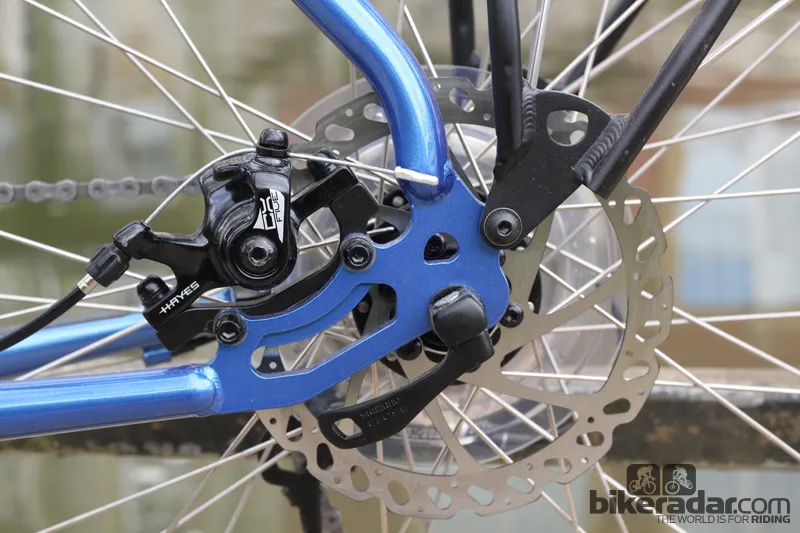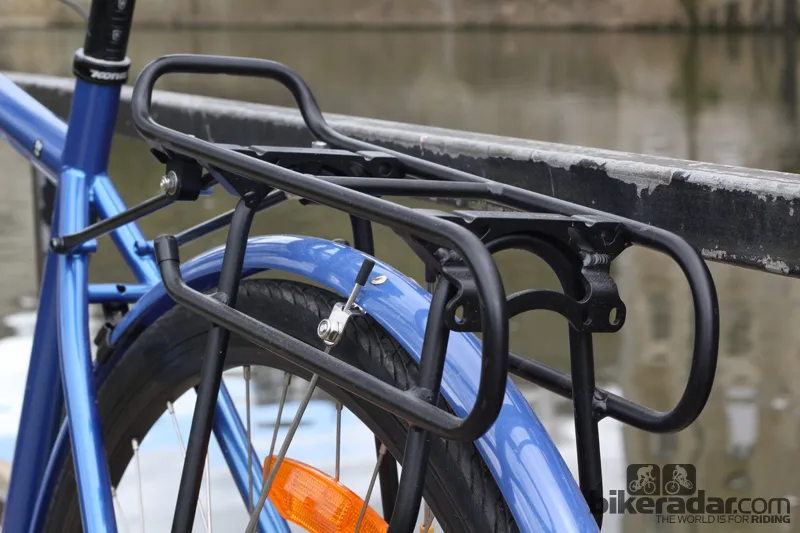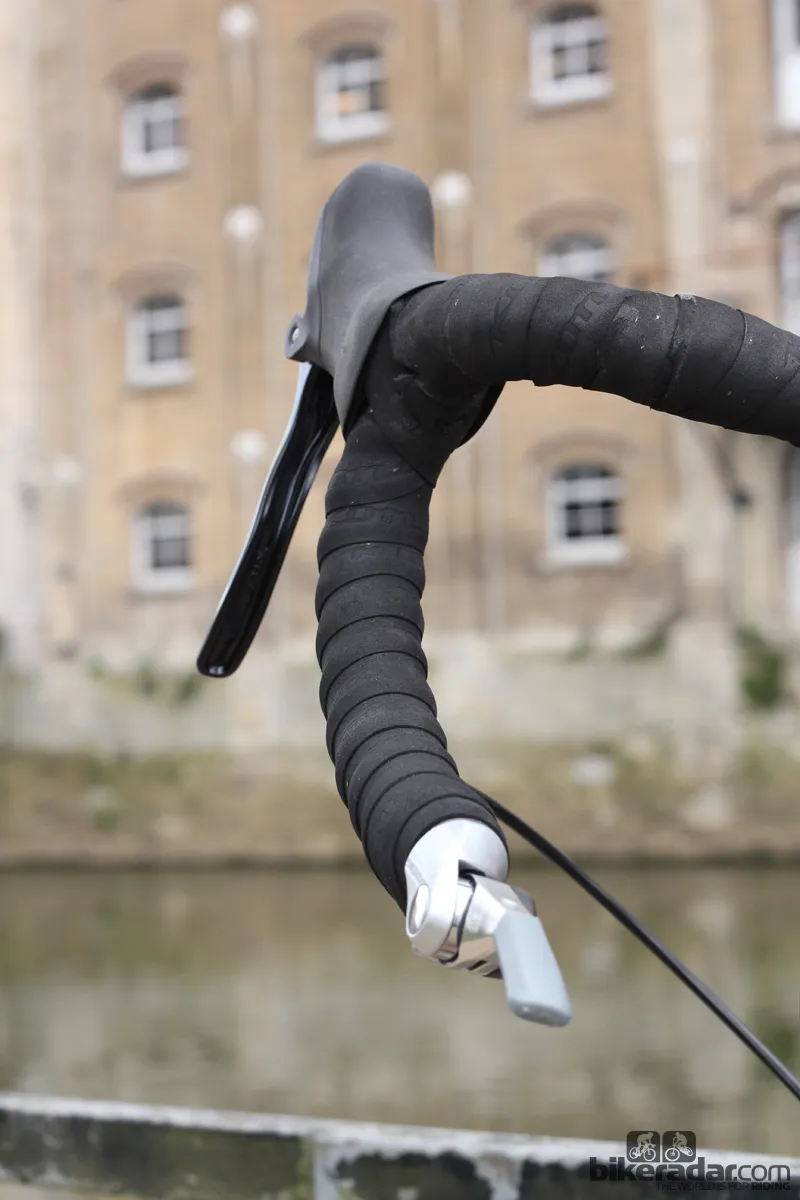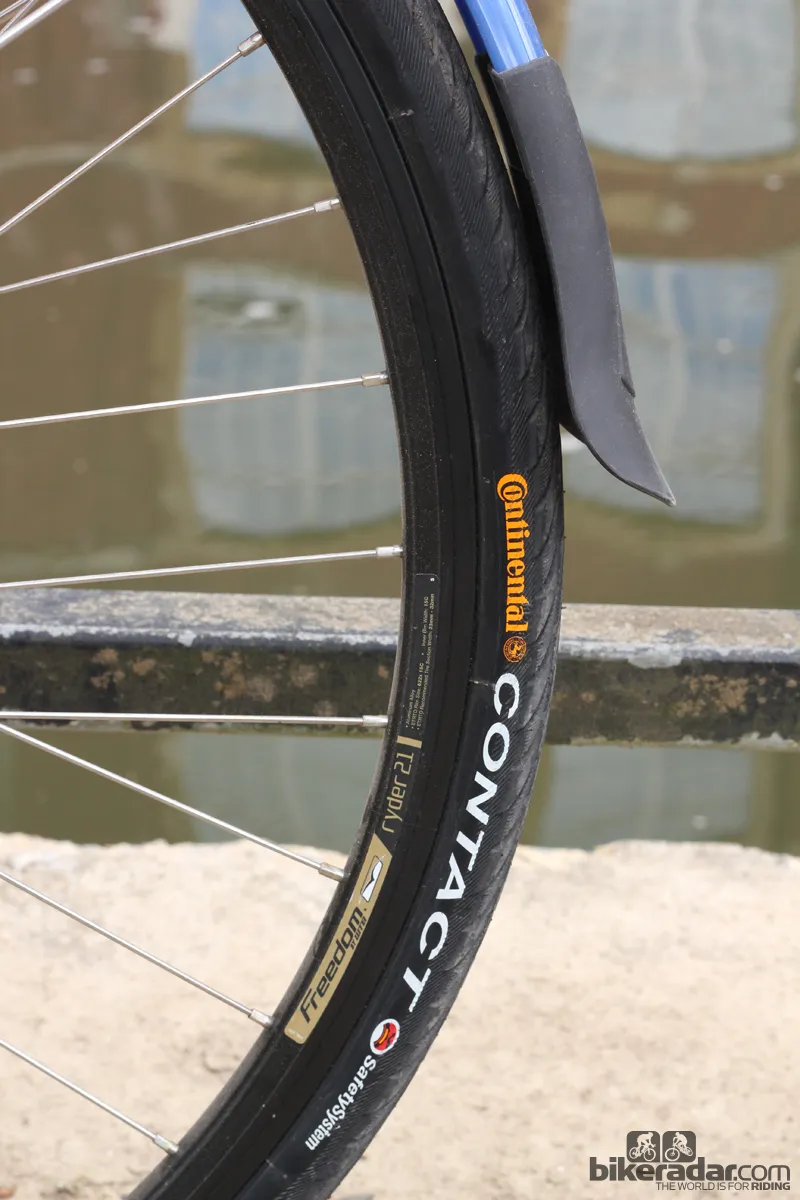Kona are best known for mountain bikes, and it's no surprise to see strong evidence of that heritage in the Sutra's construction.
The oversized, straight-bladed Project 2 fork originally appeared on the company's mountain bikes in the late 1980s, and the frame design – with its long head tube and heavily sloping top tube – also harks back to Kona's classic steel rigs.
Ride & handling: Confident cruising over distance
The Sutra is a very capable load lugger. With substantially oversized frame tubing and that chunky fork, it offers a stiff chassis that feels impressively stable with heavy packs.
The bar is set high, delivering a ride position that's more about taking in the views than putting the hammer down. It's a very comfortable place to be for the long haul, though, with comfort further enhanced by the long wheelbase and 32mm Continental Contact tyres.
Frame geometry is suitably relaxed, too, although on tourers the handling is hugely affected by how you distribute luggage weight. Unladen, the Sutra is (as you'd expect) confident and stable rather than lively, which is just want you want from a tourer.
While the 11-32T 9-speed cassette feels a little gappy if you're used to a 12-25T 10-speed, the Sutra isn't a bike for maintaining a high pace on. It's for covering big distances and carrying a lot of stuff.
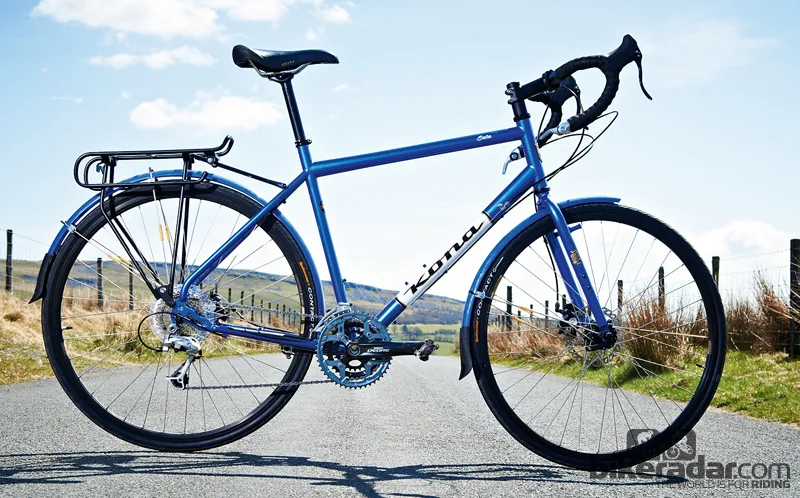
Frame & equipment: Sturdy, reliable and functional
The Sutra's transmission is heavily influenced by the off-road scene, with a Deore triple chainset (Shimano's 'trekking' 48/36/26 chainring combination) and a Deore 11-32 9-speed cassette. This gives significantly lower gears than a typical 50/40/30 road triple, although that 11T sprocket helps the top end a bit.
You don't see bar-end shifters on many bikes any more, but they make a lot of sense on touring bikes. For a start, the gear cables are out of the way of a handlebar bag, unlike the entry-level STI units often found on bikes at this price.
The front shifter is a simple friction lever with no indexing, letting you easily fine-tune the front mech position to avoid rubbing. The rear shifter has a friction option too, potentially useful in the event of derailleur hanger damage or other gear-related failures. Mechanically, they're extremely simple, reliable and repairable, unlike complicated STI levers.
Bringing the potentially large weight of the laden Sutra to a stop is a pair of Hayes CX5 mechanical disc brakes. They're not as powerful as Avid BB7s, but they're better (and easier to adjust) than the cantilever rim brakes found on traditional tourers.
The rear calliper is mounted to the chainstay and tucked inside the rear triangle, to keep it out of the way of the rear rack and mudguard mounts – full 'guards and front and rear racks are included in the price.
Up front, brake position does limit how you mount the front rack. It can be attached low down, centring the weight on the front axle, but the front brake calliper means it has to be fitted higher (using the otherwise redundant cantilever bosses), and there's not much scope to slide it fore and aft to adjust the balance. We had to do a bit of subtle manipulation of the front mudguard stay to get it around the brake, too.
An abridged version of this article was originally published in Cycling Plus magazine, available on Apple Newsstand and Zinio.
